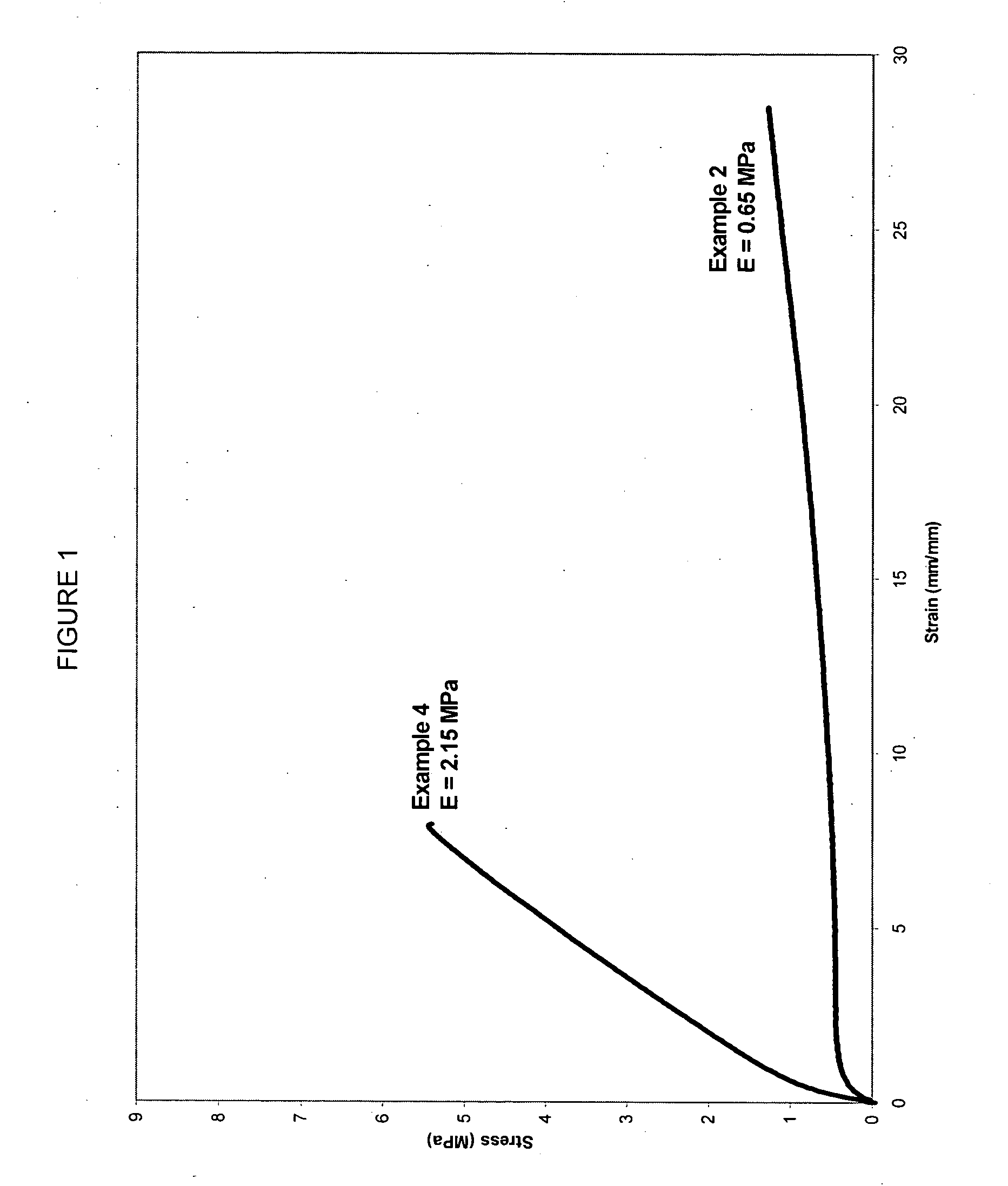Process to produce silica-filled elastomeric compounds
a technology of halogenated butyl elastomers and elastomers, which is applied in the direction of transportation and packaging, tyre parts, special tyres, etc., can solve the problems of silanes significantly increasing the cost of the resulting manufactured article, butyl compounds have poor abrasion resistance, and alcohol evolution during the manufacturing process, so as to improve the interaction of halobutyl elastomers and compound properties. ,
- Summary
- Abstract
- Description
- Claims
- Application Information
AI Technical Summary
Benefits of technology
Problems solved by technology
Method used
Image
Examples
example 1
Comparative
[0073] Example 1 was prepared in a three stage mix using a 6″×12″ two-roll mill (see formulation in Table 1). In the first stage, the roll temperature was set to 30° C. at which point the rubber was introduced onto the mill and allowed to band (rolls adjusted to a tight nip setting). Once a rolling bank was obtained, the remaining compound ingredients (less the curatives) were added incrementally. On complete incorporation of the filler and modifier, the roll temperature was increased to 100° C. and the rubber was banded for a total of 10 minutes. The compound was then removed from the mill and allowed to cool to room temperature. At this point, the rubber was re-introduced onto the mill (roll temperature=30° C.) and blended with the curative package.
[0074] The tensile properties and abrasion index of this compound is summarized in Table 2.
example 2
Comparative
[0075] Example 2 was mixed with the use of a Haake Polylab R600 internal mixer. The ingredients (see Table 1) were added into the mixer and blended for a total of 7 minutes at 30° C. and 60 rpm. The final mixture was then calendered and compression molded into a 2.5 mm thick sheet and cured at 160° C. for 90 minutes. The tensile properties of this compound were determined with the use of an INSTRON universal testing machine, series 3360, operating at a crosshead speed of 500 mm / min at 23° C. Test specimens of approximately 2.5 mm in thickness were cut from the compression-molded sheets. The resulting tensile plot (with modulus value) is depicted in the FIGURE.
example 3
[0076] Example was prepared in a three stage mix using a 6″×12″ two-roll mill (see recipe in Table 1). In the first stage, the roll temperature was set to 30° C. at which point the rubber was introduced onto the mill and allowed to band (rolls adjusted to a tight nip setting). Once a rolling bank was obtained, the remainder of the compounding ingredients (minus the curatives) were added incrementally. On complete incorporation of the filler and modifier, the roll temperature was increased to 100° C. and the rubber was banded for a total of 10 minutes. The compound was then removed from the mill and allowed to cool to room temperature. At this point, the rubber was re-introduced onto the mill (roll temperature=30° C.) and blended with the curative package.
[0077] The tensile properties and abrasion index of this compound is summarized in Table 2.
PUM
| Property | Measurement | Unit |
|---|---|---|
| Fraction | aaaaa | aaaaa |
| Dispersibility | aaaaa | aaaaa |
| Tensile strength | aaaaa | aaaaa |
Abstract
Description
Claims
Application Information
 Login to View More
Login to View More - R&D
- Intellectual Property
- Life Sciences
- Materials
- Tech Scout
- Unparalleled Data Quality
- Higher Quality Content
- 60% Fewer Hallucinations
Browse by: Latest US Patents, China's latest patents, Technical Efficacy Thesaurus, Application Domain, Technology Topic, Popular Technical Reports.
© 2025 PatSnap. All rights reserved.Legal|Privacy policy|Modern Slavery Act Transparency Statement|Sitemap|About US| Contact US: help@patsnap.com


